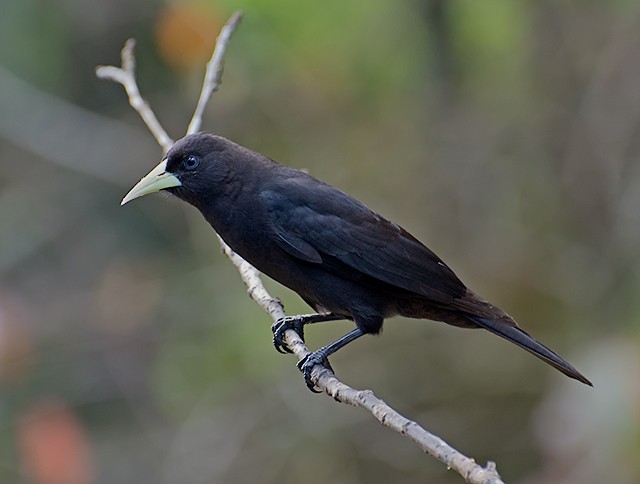Red-rumped Cacique
A species of Typical Caciques Scientific name : Cacicus haemorrhous Genus : Typical Caciques
Red-rumped Cacique, A species of Typical Caciques
Botanical name: Cacicus haemorrhous
Genus: Typical Caciques
Content
Description General Info
 Photo By Dario Sanches , used under CC-BY-SA-2.0 /Cropped and compressed from original
Photo By Dario Sanches , used under CC-BY-SA-2.0 /Cropped and compressed from original Description
The red-rumped cacique (Cacicus haemorrhous) is a species of bird in the family Icteridae. It is a species of the Amazon Basin and the Guyanas in northern South America, and is only coastal there in the Guyanas and the Amazon River outlet to the Atlantic; a separate large disjunct range exists in all of south-eastern and coastal Brazil, including Paraguay, and parts of north-eastern Argentina. It is also found in Bolivia, Brazil, Colombia, Ecuador, French Guiana, Guyana, Peru, Suriname, and Venezuela. The red-rumped cacique's natural habitats are subtropical or tropical moist lowland forests, subtropical or tropical swamps, and heavily degraded former forest. In 1760 the French zoologist Mathurin Jacques Brisson included a description of the red-rumped cacique in his Ornithologie based on a specimen collected in Cayenne in French Guiana. He used the French name Le cassique rouge and the Latin name Cassicus ruber. Although Brisson coined Latin names, these do not conform to the binomial system and are not recognised by the International Commission on Zoological Nomenclature. When in 1766 the Swedish naturalist Carl Linnaeus updated his Systema Naturae for the twelfth edition, he added 240 species that had been previously described by Brisson. One of these was the red-rumped cacique. Linnaeus included a brief description, coined the binomial name Oriolus haemorrhous and cited Brisson's work. The specific name haemorrhous combines the Ancient Greek words haima "blood" and orrhos "rump". The red-rumped cacique is now the type species in the genus Cacicus that introduced by the French naturalist Bernard Germain de Lacépède in 1799. 
Size
29 cm
Nest Placement
Tree
Feeding Habits
Red-rumped Cacique forages mostly on trees for a diverse diet of insects, fruits, and nectar, with wild fruits and arthropods being primary foods. Red-rumped Cacique feeds in groups and has a unique technique to access nectar from explosive Mucuna flowers, which also leads to pollination.
Habitat
The habitat of the red-rumped Cacique is diverse, ranging from primary and secondary growth forests to forest clearings and edges, as well as plantations. It shows a preference for gallery forests and is more forest-dwelling in the northern part of its range compared to other similar species. During the breeding season, it can also adapt to human-modified landscapes such as small towns and suburbs, while it largely sticks to forested areas during the non-breeding season.
Dite type
Frugivorous
General Info
Feeding Habits
Bird food type

Fruit
Species Status
Not globally threatened.